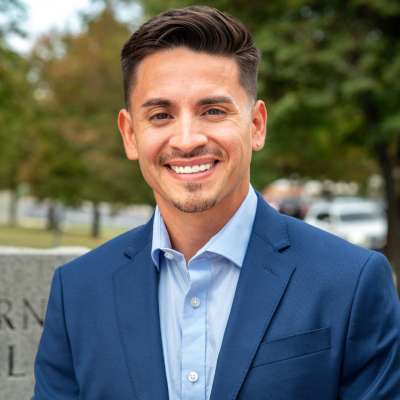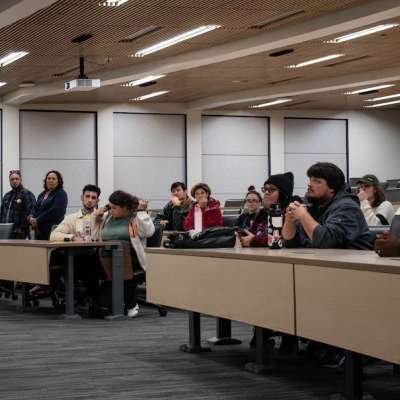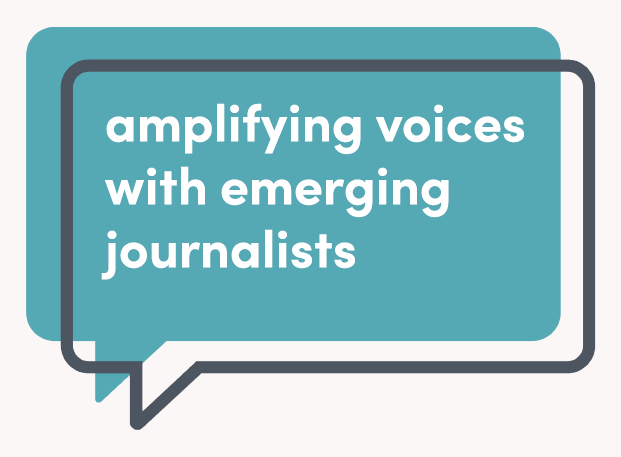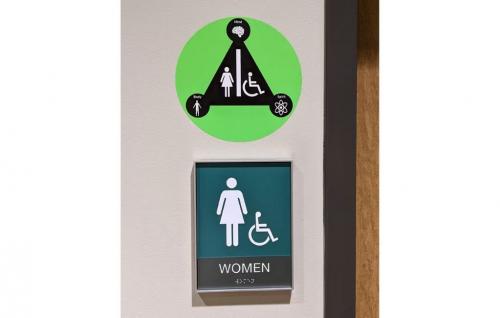A woman from Venezuela came to Luz Gamarra in January with a request: Bring English-as-a-second-language classes to Salt Lake Community College’s annex in Herriman, where the woman lived.
Gamarra, the lead academic adviser for humanities and ESL students at SLCC, told the woman she needed to gather at least 10 signatures from residents wanting the program in Herriman. The annex there offers general-education classes to Salt Lake County’s southwest corner. The nearest campus offering ESL classes was at SLCC’s Taylorsville location on Redwood Road, nearly 16 miles away.
Four months later, the woman returned with more than 60 signatures. Gamarra coordinated with the ESL department, and soon, ESL classes were on the Herriman Annex course schedule for the fall semester, which begins August 23.
“We’re so happy,” Gamarra said. “We are here to respond to the necessities of our communities and students of different backgrounds.”
For Gamarra, the work is personal — because back in 2004, arriving in Salt Lake City from Peru with two graduate degrees but unable to speak English, she was in much the same situation.
Gamarra’s work
In her 12 years at the college, Gamarra has helped hundreds of ESL students primarily through peer mentoring programs, such as Amigos Mentores (“mentor friends”) and ESL Legacy Mentors, which pairs new ESL students with current and past students to help them succeed. Gamarra calls this “the chain of success.”
Her work has led to national recognition. In March, USA Today honored her as their Utah “Women of the Year” for her significant positive impact on her community. The paper cited her work with immigrants and ESL students to get them into college, and then connecting them with mentors.
“These honorees are strong and resilient women who have been champions of change across the country, leading and inspiring as they promote and fight for equity, and give others a place to seek help and find hope,” USA Today wrote.
Cultural shock
As a student in Peru, Gamarra earned her master’s and doctorate studies in law and political science. When she moved to Utah with her family in 2004, she got one consistent answer whenever she asked about how her degrees could be applied in the U.S. workforce: “You need to start over.”
Gamarra said she reluctantly accepted the advice because she did not speak English and found herself in an unfamiliar country and academic circumstances. Wanting to learn the language, Gamarra enrolled at SLCC in 2005, starting with ESL classes. Two years later, she had earned an associate degree in social work.
She then went to the University of Utah to apply for a bachelor’s degree, where a staff member told her she had been given wrong information years before. “[They] told me that there had been no need to start with an associate degree,” Gamarra said in Spanish. “I could have immediately applied for a master’s degree.”
“This idea had been put into my head, that I would need to start from scratch all over again,” Gamarra said. “Looking back, it seems that school members did not know how to work with [non-English speakers and] people from other countries.”
Gamarra said that “many immigrants like me were going through the same thing ... they didn’t have the accurate information to take advantage of and grow.”
Learning that, she said, spurred her to action. “I knew I had to do something,” she said.
Peer mentorship
After earning a master’s in social work, Gamarra returned to SLCC to work as an adviser, with the goal of helping ESL students get into college. In her job, Gamarra oversees ESL Legacy Mentors, a peer mentoring program that began in September 2019 and now helps over 300 students.
Often, she said, new ESL students — most of whom were born outside the country and experience a language barrier — feel nervous or too embarrassed to ask for help. Programs like ESL Legacy Mentors work to build trust.
“Having a mentor makes the difference,” Gamarra said. “Creating activities where students can feel a sense of belonging, connect and make friends – for me that is the key. Many times, the cultural shock of having to learn English can isolate us.”
Gamarra said about 80% of the students who walk into her office only intend to learn English and move on, believing that school is not for them. SLCC graduate Cinthia Gonzalez was one such student.
Gonzalez, also from Peru, moved to Utah in January 2020. She loved the state but found it hard to integrate, and felt she needed to learn a new language and more about the cultural differences. Gonzalez decided to take ESL classes, which is where she met Gamarra.
“My initial goal was just to learn English, so I could communicate, and then to get a job – to do things for myself,” Gonzalez said.
While taking ESL classes, Gonzalez became more involved in the college and acted as president of ESL Legacy Mentors from February 2020 to December 2021, and remained a student mentor afterwards. She said the program changed how she viewed education. “The group showed me that I could study something more,” Gonzalez said.
Gonzalez received scholarships to pursue a degree in interior design, and walked at SLCC’s commencement ceremony earlier this month. While at the college, Gonzalez also took interest in construction, and is now looking to transfer to Utah Valley University to study construction management.
She’ll continue to offer advice to students, she said, even if informally: “[We are] mentors forever.”
Mothers and daughters
Gamarra said the USA Today honor was not a solo effort. She dedicated the award, she said, “to those grand women who have helped me, accompanied me and continue to accompany me.”
Those include students, professors and colleagues — as well as her daughters and her mother, who as a widow worked to support Gamarra and her siblings.
Gamarra’s daughter, Elizabeth, 23 — who graduated from SLCC in 2014 (at age 16) and received the college’s inaugural Rising Star Award, which recognizes alumni who “have made a profound and positive impact in their communities and beyond” — recalled when her mother began to create peer mentorship programs.
“It was nice to see my mom form some sort of community at SLCC where I could see myself reflected,” she said.
Elizabeth Gamarra – who has been a Fulbright Scholar, Oxford Consortium Fellowship recipient, Rotary Peace Fellow and TEDx speaker – said she mentored five Latina women, as part of her mother’s early efforts to create peer mentorship. It was, Elizabeth said, a “transformative experience because they ended up helping me more. It was the first time I saw Latina women super united.”
Luz Gamarra likened community colleges to “prepared soil” for helping ESL students — and that, for her, mentorship is an effort that doesn’t end.
“My dad always said, alongside my mom, ‘You must help someone, that’s good. Don’t leave alone – always take someone with you,’” she said. “In this life, we are here to help someone, to walk with someone hand in hand who knows the same as you, and grow.”
Cristian Martinez wrote this story as a journalism student at Salt Lake Community College. It is published as part of a collaborative including nonprofits Amplify Utah and The Salt Lake Tribune.
###
NOTE TO MEDIA PARTNERS PUBLISHING WORK
We also request organizations include the following text either at the beginning or end of the story text :This story is jointly published by nonprofits Amplify Utah and [Your Media Organization's Name] to elevate diverse perspectives in local media through emerging journalism. Cristian Martinez wrote this story as a journalism student at Salt Lake Community College. For more stories from Amplify Utah, visit amplifyutah.org/use-our-work.
























